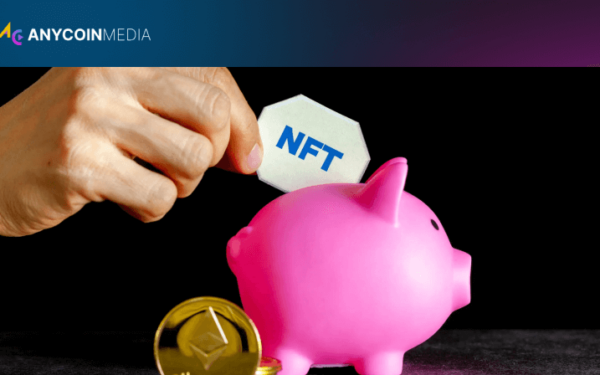The world of digital currencies has exploded in recent years, captivating investors and tech enthusiasts alike. Cryptocurrencies, once a niche concept, have become a global phenomenon. But what drives their value? Let’s delve into the complex mechanisms that determine a cryptocurrency’s worth.
At its core, a cryptocurrency’s value stems from a delicate interplay of supply, demand, and perceived utility. Unlike traditional currencies backed by governments, cryptocurrencies rely on a decentralized network of users and investors to establish their worth.
The basic economic principle of supply and demand plays a crucial role in cryptocurrency valuation. Limited supply often contributes to increased value. Bitcoin, for instance, has a hard cap of 21 million coins. This scarcity can drive up prices as demand grows.
Demand for a cryptocurrency can surge due to various factors:
When demand outpaces supply, prices tend to rise. Conversely, an oversupply or lack of interest can lead to depreciation.
A cryptocurrency’s practical applications significantly impact its value. Coins that solve real-world problems or offer unique benefits tend to attract more users and investors. Ethereum, for example, gained traction due to its smart contract functionality, enabling decentralized applications (dApps) and NFTs.
Key utility factors include:
The more useful a cryptocurrency proves to be, the more likely it is to gain value over time.
Cryptocurrencies are notoriously volatile, often subject to rapid price swings based on market sentiment. Investor perception plays a significant role in determining short-term value fluctuations.
In the digital age, social media platforms have become powerful drivers of cryptocurrency valuation. A single tweet from a high-profile figure can send prices soaring — or plummeting. This phenomenon, often referred to as the «Elon Effect» due to Elon Musk’s influence on crypto markets, highlights the impact of public figures on digital asset values.
Mainstream media coverage can significantly affect a cryptocurrency’s perceived value. Positive news stories about adoption, technological breakthroughs, or regulatory approval frequently lead to price increases. Conversely, negative press — such as reports of security breaches or regulatory crackdowns — can cause rapid devaluation.
Innovation is a key driver of cryptocurrency value. Coins that consistently improve their underlying technology tend to attract more users and investors.
As blockchain networks grow, their ability to handle increased transaction volumes becomes crucial. Cryptocurrencies that successfully implement scalability solutions — such as layer-2 protocols or sharding — regularly see a boost in value due to improved performance and reduced transaction costs.
The value of a cryptocurrency can also increase as its network expands. This phenomenon, known as the network effect, occurs when the utility of a product or service increases as more people use it. For cryptocurrencies, a larger network often means:
The regulatory landscape plays a significant role in shaping cryptocurrency values. Clear, favorable regulations can boost investor confidence and drive adoption.
Government policies regarding cryptocurrencies vary widely across the globe. Countries that embrace digital assets with clear regulatory frameworks often see increased interest and investment in cryptocurrencies. Conversely, hostile regulations or outright bans can severely impact a coin’s value within specific regions.
As major financial institutions and corporations begin to embrace cryptocurrencies, their values typically see significant boosts. Institutional adoption can take various forms:
This institutional backing not only provides additional liquidity but also lends credibility to the cryptocurrency market as a whole.
To better understand the various factors that contribute to a cryptocurrency’s value, let’s examine a comparative table:
| Factor | Impact on Value | Example |
| Supply Scarcity | High | Bitcoin’s 21 million coin cap |
| Utility | Medium to High | Ethereum’s smart contract functionality |
| Network Size | Medium to High | Bitcoin’s large user base and mining network |
| Technological Innovation | Medium to High | Cardano’s peer-reviewed development approach |
| Regulatory Environment | Medium | El Salvador’s adoption of Bitcoin as legal tender |
| Media Coverage | Low to Medium | Positive news coverage boosting short-term prices |
| Institutional Adoption | Medium to High | Tesla’s Bitcoin purchases and payment acceptance |
| Market Speculation | High (Short-term) | Price volatility during bull and bear markets |
This table illustrates the complex interplay of factors that influence cryptocurrency valuations. It’s important to note that the impact of these factors can vary greatly depending on market conditions and the specific characteristics of each cryptocurrency.
The process by which cryptocurrencies gain value is multifaceted and dynamic. From the fundamental principles of supply and demand to the cutting-edge technological innovations that drive adoption, numerous factors contribute to the perceived worth of digital assets.
As the cryptocurrency ecosystem continues to mature, new valuation metrics and methodologies are likely to emerge. Investors, developers, and enthusiasts must stay informed about the latest trends and developments in this rapidly evolving space.
Ultimately, the true value of a cryptocurrency lies in its ability to solve real-world problems, facilitate efficient transactions, and gain widespread acceptance. As blockchain technology advances and integrates further into our daily lives, the mechanisms for determining cryptocurrency value will undoubtedly become more sophisticated and nuanced.





